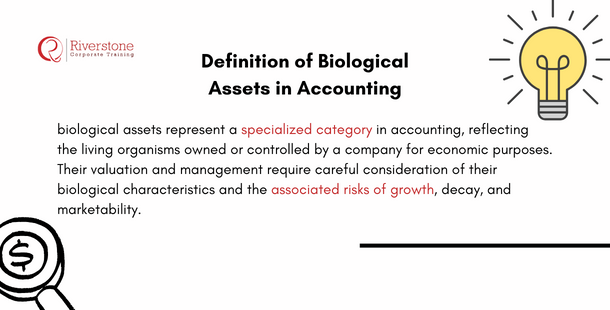How to Analyze Biological Assets in Accounting
Definition of Biological Assets in Accounting
When a company has assets that are living, they fall into the category of biological assets.
The biological assets in accounting include trees, animals, etc. The accounting will break down and classify every asset, attributing to its value. The biological assets are generally valued at fair value, with less selling costs. Accounting recognizes these biological assets as part of the assets in the statement of the financial position.
Notably, biological assets are often difficult to maintain since they have an active component that makes them grow. They are often under threat of change. They are, therefore, influenced by time since they have a specific growth and development pattern. They also have a limited time window where they sell before they rot or become useless to the consumers.
Characteristics of biological assets in accounting
- Biological assets can grow or procreate hence creating a direct impact on the value of investments.
- The economic value of assets may derive after a very long time. Many of the costs are incurred earlier in the life of the assets.
- The production time is very long hence impacting the way revenue is recognized from the assets.
- Biological assets have no relationship between the expenditure on the asset and the ultimate benefits due to future circumstances such s droughts and floods.
- Biological accounting is used to set out how biological assets that are, for instance, used in agriculture is recorded and presented in a financial statement.
- Biological asset accounting gives a straightforward way of classifying and grouping the living assets to make it possible to recognize the profit and loss of a company. This clarity in classification is as crucial in agriculture as it is in capital-intensive industries, where project finance structuring and risk analysis play a vital role in ensuring financial transparency and sustainability.
- Biological assets can degrade and get damaged easily. The value can also depreciate faster hence bringing losses to the company. Their demand is much dependent on seasons. A significant loss might be incurred for instances of climatic changes such as droughts or even floods. Sometimes they are affected by the spread of a disease that damages the biological assets.
Application of Biological Assets in Accounting
To conclude, biological assets are a unique accounting field that will ensure that the living assets are categorized and classified adequately in the company. The accounting field is helpful for the business that majorly deals with biological assets. Classifying an asset as organic will denote its nature and the value for the business owner.
A Closer Look at Recognition and Measurement of Biological Assets
Knowing IAS 41 Agriculture is crucial towards proper accounting of biological assets which is a complicated part of accounting that has even been simplified. In this they would go to the depth of the foundations, when and how biological assets should be initially recognised into the financial statements or rather growing crops or livestock and other biological assets and how later on, play a roll to measure the biological assets at fair value less anything to sell them. We shall distinguish between biology and agricultural produce, and explain the important distinction between bearer plants (e.g. fruit trees) that are now under IAS 16 Property, Plant and Equipment. This section would be a crucial guide to people practicing in the finance field in Singapore going through SFRS 41. For professionals or students aiming to build a solid understanding of such accounting standards, enrolling in a Diploma in Accounting in Singapore or exploring Accounting Short Courses in Singapore can provide the practical knowledge needed to confidently apply IAS 41 and related frameworks.
Overcoming Challenges in Valuing Biological Assets in Practice
Although the IAS 41 requires fair values of biological asset to be measured, the approach has in most instances posed serious problems due to complexities encountered in most parts of Singapore agricultural sector. This article would discuss the issues associated with ascertaining reasonable fair values in situations where there is no active market or where the biological peculiarities render the direct comparison not easy. We shall cover valuation methods, including discounted cash flows, valuers and procedures in those cases in which a reliable measurement of fair value is not available (giving rise to a cost model). Awareness of these two practical obstacles to the correct identification of financial reporting is an imperative in the reporting of biological assets. For professionals seeking to enhance their valuation expertise, an Advanced Business Valuation Course offers essential frameworks for assessing complex assets. Additionally, the Financial Modeling Course in Singapore can help develop the technical skills needed to apply methods like discounted cash flow effectively in real-world asset valuation.



